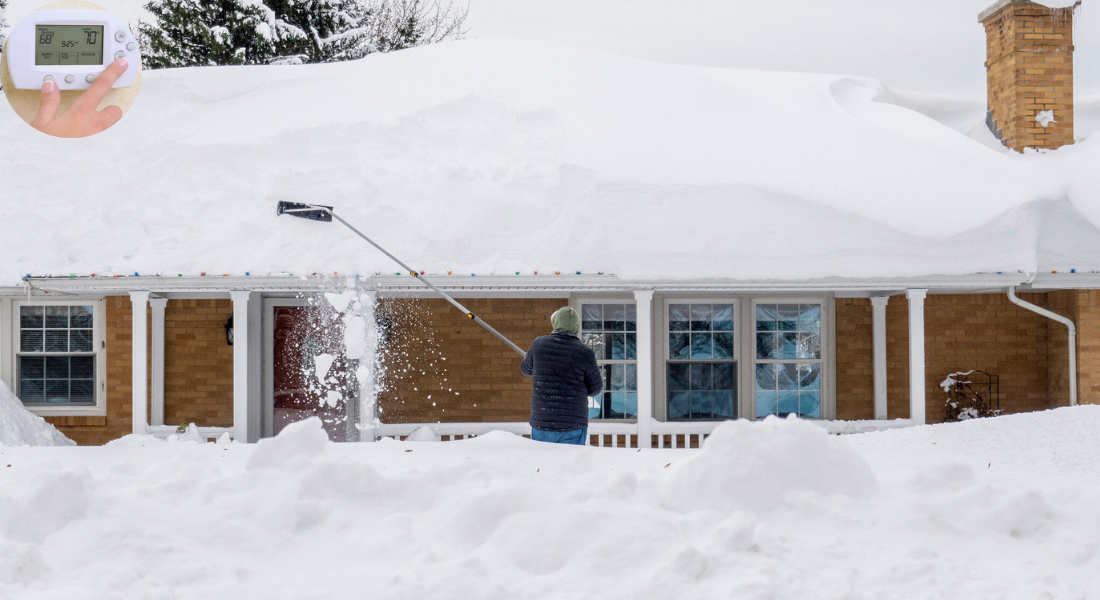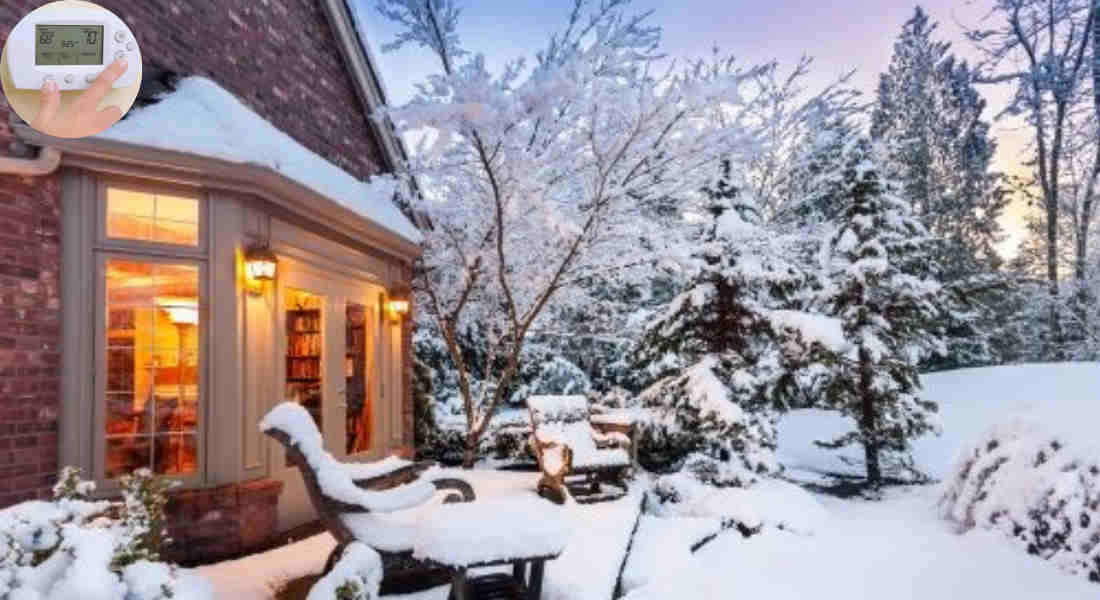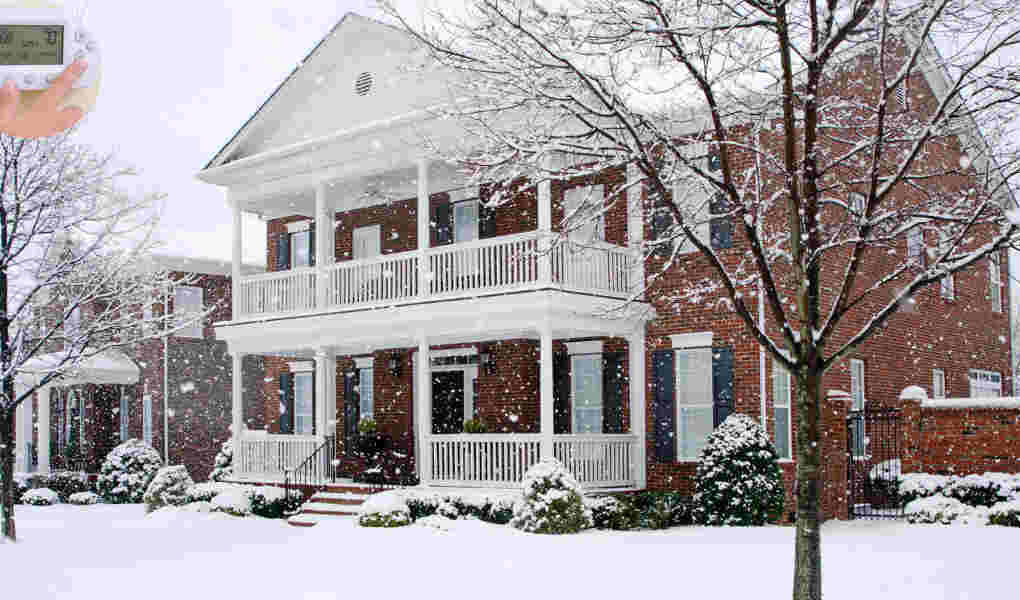When winter arrives, setting the right temperature for your home is crucial not only for comfort but also to protect your property and manage energy costs effectively. Whether you are staying in your house or leaving it vacant during the cold months, maintaining an appropriate indoor temperature helps prevent issues such as frozen pipes and excessive heating bills. Experts generally recommend keeping your thermostat at a minimum of 55°F (about 13°C) if the house will be empty to avoid pipe damage, while a comfortable living temperature when you are home typically ranges from 68°F to 72°F (20°C to 22°C). Lowering the temperature slightly when sleeping or away can also conserve energy without sacrificing comfort. Balancing these factors ensures your home stays safe and warm throughout winter.
The Impact of Temperature on Your Home
Temperature plays a crucial role in the overall health of your home. When it’s too cold, not only can you feel uncomfortable, but potential problems like frozen pipes and drafts may arise. This can lead to costly repairs that no homeowner wants to face.
On the flip side, keeping your house too warm when you’re away can waste energy and inflate utility bills significantly. It’s important for both comfort and cost-effectiveness to find a balance.
Wood expands and contracts with heat changes, potentially leading to cracks or gaps in walls and floors.
Maintaining a stable indoor climate helps preserve furniture and appliances. Extreme temperature variations might shorten their lifespan as well. Keeping an eye on how temperature affects these elements is vital for protecting your investment.
Factors to Consider When Choosing the Right Winter Temperature
When deciding on the right winter temperature for your home, several factors come into play.
First, consider the climate in your area. Colder regions may require a higher baseline to keep pipes from freezing.
Next, think about insulation quality. Homes with better insulation can maintain warmth more effectively at lower temperatures.
Family needs also matter. If you have young children or elderly residents, it’s wise to set a warmer temperature for comfort and safety.
Trusts keep the details of your estate confidential, unlike wills, which become public upon death.
Personal comfort levels vary among individuals. Some prefer cooler indoor environments while others thrive in warmth; it’s important to find that sweet spot that satisfies everyone living under your roof.
You may also read (how to handle noise complaints in your home).
Benefits of Lowering the Thermostat in Winter
Lowering your thermostat in winter can lead to significant energy savings. By reducing the temperature by just a few degrees, you can cut down on heating costs considerably. In addition to saving you money, this also reduces your carbon footprint.
A cooler home can actually promote better sleep. Many people find that sleeping in slightly lower temperatures is more comfortable and conducive to restfulness.
Snuggly sweaters and soft blankets become essential companions during chilly nights, creating a cozy atmosphere.
Regularly giving them a break from constant use extends their efficiency and reliability.
Maintaining lower indoor temperatures helps prevent drafts and cold spots while keeping your living space fresh air-wise—an unexpected advantage for many homeowners!
Tips for Keeping Warm in a Cooler House
In a cooler house, layers are your best friend.Wear multiple layers of clothing to trap heat more effectively. Think sweaters, thermal tops, and cozy socks.
Use rugs or carpets on floors to add warmth underfoot. Cold tiles or wood can make any room feel chillier than it is.
Weatherstripping or draft stoppers can help seal drafts around windows and doors.Heat can escape even through small gaps.
Consider using heated blankets for an extra boost while sitting on the couch or in bed. They provide immediate comfort without heating the entire space.
Embrace hot drinks like tea, coffee, or cocoa. Not only do they warm you from within, but they also create a cozy atmosphere that makes chilly days much more enjoyable.
You may also read (how long to live in a habitat for humanity house).
What is the Ideal Winter Temperature for Your House?
Finding the ideal winter temperature for your house can be a balancing act. Many experts suggest keeping your thermostat set between 68°F and 72°F during the day. This range provides comfort without excessive energy use.
At night, consider lowering it slightly to around 60°F to 65°F. Cooler temperatures may improve sleep quality while still protecting your home from potential freezing pipes.
Remember that individual preferences vary. Some people prefer a warmer atmosphere, while others enjoy cooler settings. It’s essential to find what feels best for you and your family.
Consider using programmable thermostats or smart home technology to maintain optimal temperatures automatically throughout the day and night. These tools help you save on heating costs while ensuring comfort when you’re at home.
Adjusting the Thermostat While You’re Away
When it comes to adjusting the thermostat while you’re away, there are a few key strategies to keep in mind. First, consider lowering your thermostat to around 55°F (13°C). This is generally safe for most homes and will prevent pipes from freezing without using too much energy.
If you have a programmable or smart thermostat, take full advantage of its features. Set it to lower automatically during times when you’re not home and warm up shortly before you return. By doing so, you can save on heating costs without sacrificing comfort.
Don’t forget about any plants or pets that may be left behind; make sure their needs are met within whatever temperature range you’ve chosen.
Remember that every home has different insulation qualities and heating systems. You might need to experiment with settings until you find what works best for both comfort and savings when considering what temperature to leave house in winter when away. Keeping these tips in mind can help maintain a cozy environment while also being kind to your wallet this winter season.
You may also read (how do you wire a generator to your house).




